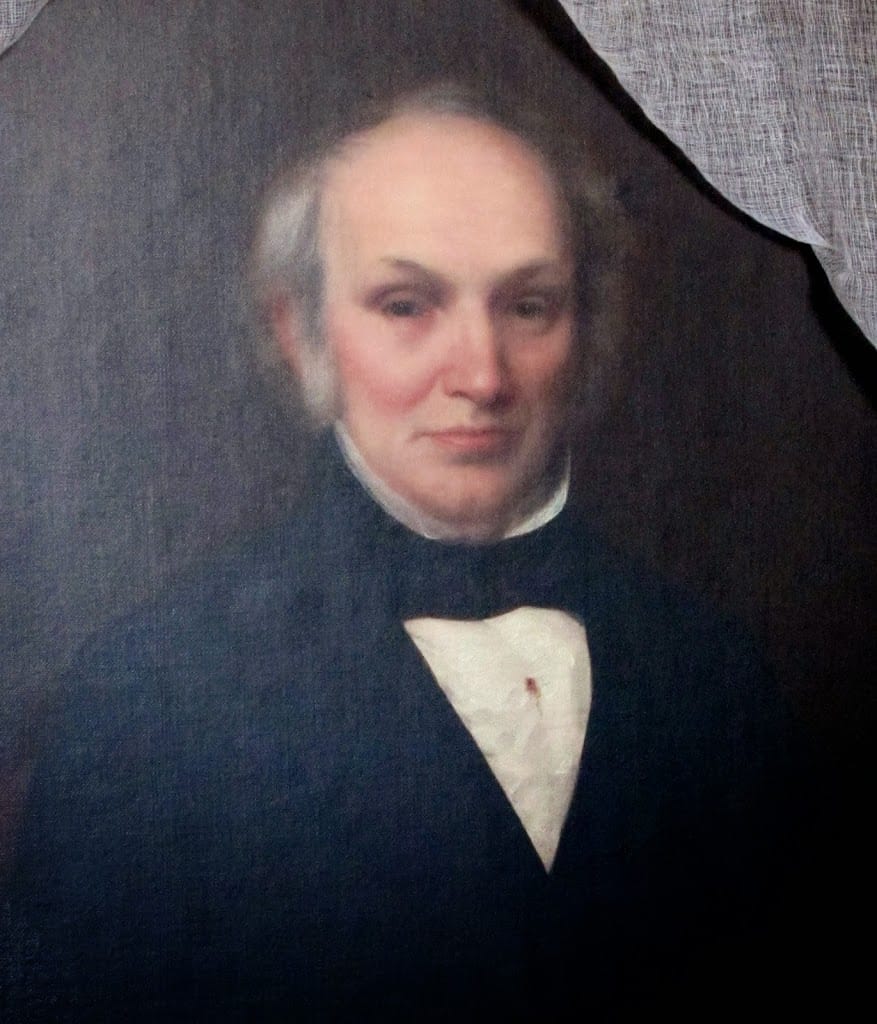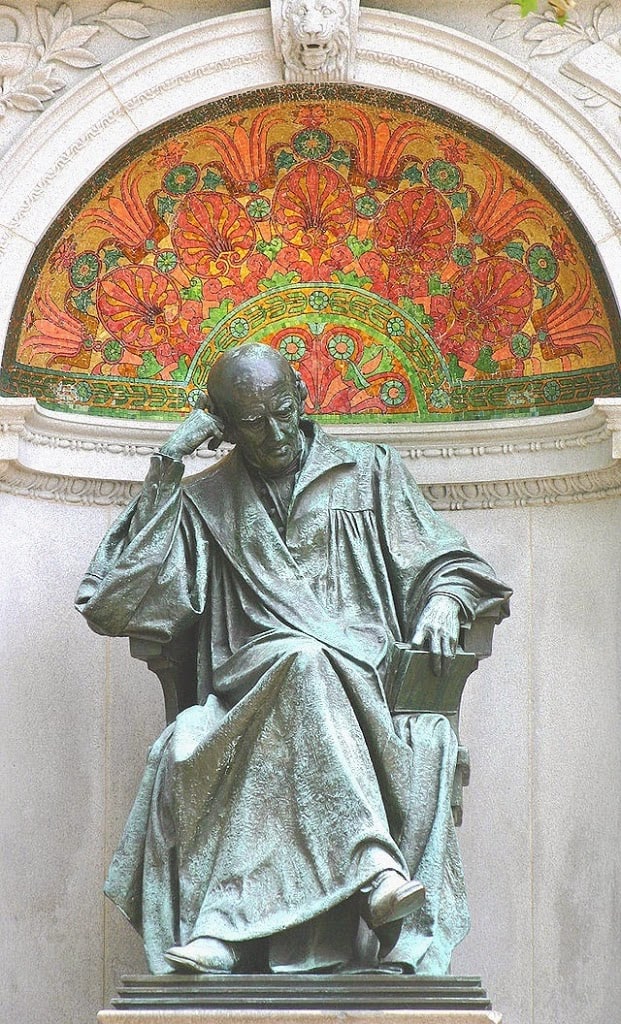Uncle Doctor
Robert Swan’s youngest brother Frederick wrote a history of the Swan family in the 1890s. In it, he talks about their Uncle Daniel, or, as they called him, “Uncle Doctor:”
[H]e made choice of the profession of medicine, and studied with Dr. John Brooks, then the resident physician of Medford. . . . Early in his practice, his attention was directed to the system of medical practice known as homeopathy and it won his approval.

Daniel Swan
Homeopathy is a form of alternative medicine created in 1796 by the German doctor Samuel Hahnemann (1755–1843), based on a doctrine of like cures like. Hahnemann believed that a substance that causes the symptoms of a disease in healthy people will cure similar symptoms in sick people. Older practitioners had proposed this idea. Around 400 BC, Hippocrates prescribed a small dose of mandrake root to treat mania, because mandrake produces mania in large doses. In the 1500s, Paracelsus stated that small doses of “what makes a man ill also cures him.” The same assumption encouraged people to treat the bite of a rabid dog by placing hair from the dog in the bite wound. (One can only assume that not all of the offending dogs were rabid, or people would have noticed that this never helped.)
Hahnemann believed that diseases were caused by “miasms,” or “infectious principles.” He thought there were three of miasms and each were associated with specific diseases. His hardest-working miasm was psora (Greek for “itch”). According to Hahnemann, Psora was related to itching, and caused other ills like epilepsy, cancer, jaundice, deafness, and cataracts. Conventional medicine, Hahnemann thought, merely suppressed symptoms, and drove the miasm deeper to create more serious ailments.
While Hahnemann believed in treatments that produced disease-like effects, he also found that undiluted doses intensified patient symptoms, sometimes dangerously. He decided that the remedies should be weaker. His remedies were made by copiously diluting a chosen substance in alcohol or distilled water, then striking the mixture repeatedly against something with a little give to it – Hahnemann used a striking board of wood, stuffed with horsehair and covered with leather. He believed that the striking activated the “vital energy” of the diluted substance and made it stronger. In fact, he usually diluted remedies well past the point where any molecules of the original substances remained in them.

Dr. Samuel Hahnemann Memorial in Washington, D.C.
Homeopathy, which enjoyed a certain resurgence in the late 20th century, uses animal, plant, mineral, and synthetic substances in its remedies. Examples include arsenic oxide, table salt, bushmaster snake venom, opium, and thyroid hormone. Homeopaths also use treatments made from diseased products – blood, tissue, and fecal, urinary, and respiratory discharges.
In the late 1700s and early 1800s, mainstream doctors were bleeding and purging patients. They administered such complex mixtures as Venice treacle, made from 64 ingredients including opium, myrrh, and viper’s flesh. These treatments often worsened symptoms and sometimes killed patients. Hahnemann offered a simpler, gentler regimen. During the early 1800s homeopathy grew increasingly popular for its apparent success in treating people during epidemics. Homeopathic hospitals often had lower death rates than conventional hospitals, where treatments were ineffective and often harmful. Though less harmful homeopathic treatments were equally ineffective (except, perhaps, for the placebo effect).
What might have drawn Daniel Swan to homeopathy? One thought is that he had a fair amount to do with his experience traditional doctors when he was a boy. He was lame for most of his life and Frederick wrote that Daniel’s problems started when he was 11. According to Daniel’s sister Hannah, his
. . . lameness was caused by a white swelling, which came on his right knee some weeks after he had the small pox with the rest of the children in 1792 – by inoculation . . . Daniel’s white swelling continued to increase and he was sent to Tewksbury for medical attendance of Dr. Kittridge and boarded with Mr. Baird a farmer in Tewksbury . . . while with him . . . [Daniel] sat on a pile of wet boards and took a cold which brought on a fever and he became delirious and hardly slept for a week. Dr. Kittridge said he must have some sleep and ordered a teaspoonful of laudanum to be given to him and if that did not put him to sleep to give him a full tablespoonful, and if that had no effect to give him half a teacup full. [Laudanum is an extract of opium mixed with alcohol, containing about 10% powdered opium by weight.] This was all given him before he fell asleep but after the last was given he fell asleep and slept 22 hours. The family became alarmed and called for Dr. Kittridge. He told them not to be concerned [,] that it was all right, but when he came the next morning, his first question was: “is he alive.” [Daniel] soon awoke . . . and soon got well . . . Sometime after, he was sliding on some ice . . . and hit his leg several inches below the lame knee and had a bad cut . . . which was some weeks in healing . . . Not long after this . . . he slipped and fell backwards and put the lame knee out of joint. It caused a bad swelling and more lameness, both of which became permanent and from which he never recovered. For many years he had to walk with a crutch, which he was not able to dispense with until the year before he went to Harvard College, 1799[,] when he was able to walk with a cane which he has never been able to dispense with. . . .
With such a history, it is not surprising that Daniel was interested in medicine and why he liked the idea of a system that used tiny doses of remedies. Like other homeopathic physicians, he would have found his success rates at least as good as those of traditional doctors of the time. Even in the 19th century, mainstream doctors disapproved of homeopathy, but “though many physicians differed with him theoretically, they all accorded to him conscientious convictions and great skill in his profession.”
